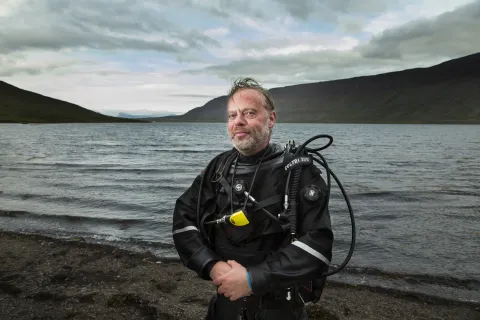
In the fall of 1682, the cargo ship Höfðaskip was lost in a violent storm off the coast of Langanes, along with all its crew, Icelandic manuscripts, and other valuable artifacts. The ship had departed from Spákonufellshöfði near Skagaströnd and was en route to Copenhagen. Among its crew was Hannes Þorleifsson, a collector of manuscripts, who was transporting Icelandic medieval manuscripts and artifacts to the King of Denmark.
Cargo ships like Höfðaskip typically sailed along the coast and therefore usually sank close to land. Underwater surveys have shown that the wrecks are generally found within six kilometers from the shore. “There is a good chance of locating the Höfðaskip wreck. If we manage to locate it, we aim to conduct further studies on it, as it is known that ships from this era have been well-preserved in the sea,” says Steinunn Kristjánsdóttir, a professor in the Department of Philosophy, History, and Archaeology at the University of Iceland, who is leading a research project on Höfðaskip in collaboration with the University of Iceland's Research Center in the Westfjords.
Similar research has been conducted in Iceland
This project directly aligns with Steinunn’s research interests, which are primarily the medieval period in Iceland, monastic life, and the Christian church. The search for Höfðaskip is not about examining the lost manuscripts and items that were lost with the ship but rather locating the shipwreck itself. If successful, this would open the possibility of further research on the ship and its cargo.
“Similar research has been conducted in Iceland. For example, the Dutch ship Melckmeyt, which sank off Flatey in Breiðafjörður in 1659, has been extensively photographed and explored. Additionally, there are a few smaller underwater surveys underway,” Steinunn notes.



